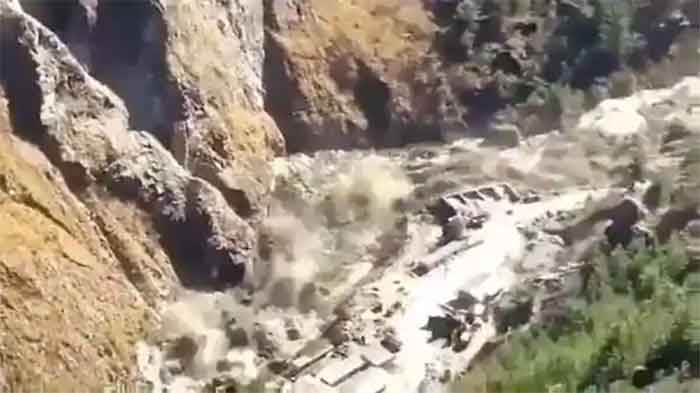
There is a huge tectonic place below the land mass of India known as “Indian Plate.” The rotation of the earth is causing this plate to continually move northward just like any matter moves to the top in a centrifugal machine. The Indian Plate crashes into the Tibetan Plate as it moves to the north. The pressure between these two plates is leading to the continual rise of the Himalayas and also earthquakes in Uttarakhand in particular. Thus, Uttarakhand has been having an earthquake every ten years leaving aside the last 20 years. A possible reason for earthquake not taking place in the recent period could be that the load of water in the Tehri Reservoir is acting like a cushion between the two plates just as two boxers stop for a moment if a small child stands between them. However, the Indian Plate continues to push against the Tibetan Plate despite this cushion. Consequently, a bigger earthquake may take place in the coming time.
The abovementioned natural work of Ganga of carrying the material requires that the river be allowed to flow freely just as an elephant requires an open road. The hydropower projects make a barrage on the rivers that creates an obstruction to this free flow. The Ministry of Environment had constituted a Committee under the Chair of Ravi Chopra under the orders of the Supreme Court after the 2013 disaster. The Committee said that the damage in the 2013 disaster took place only above and below the hydropower projects. The Committee said that the landslide at Kedarnath turned into a disaster not because the rains were exceptional but because the flow of the Mandakini and Alaknanda Rivers was obstructed by a number of under-construction and commissioned hydropower projects. The present landslide has likewise become a disaster because the Rishi Ganga and Tapovan Vishnugad projects had obstructed the flow of the Rishi Ganga and Dhauli Ganga Rivers.
Curiosity is that the Government is building these projects even though they have become economically unviable. The cost of electricity made from greenfield hydropower projects is about Rs 7 to Rs 10 at present. Then there are environmental costs of hydropower projects that are not accounted in the price. I have assessed that the cost of electricity generated from hydropower will become Rs 18 per unit from the proposed Kotlibhel-1B project if the cost of environmental damage is added to the cost of electricity.
Lo! solar power is available at about Rs 3 per unit. A problem is that solar power is produced in the daytime while the demand is more in the morning and evening which are called “peak” times. However, daytime electricity can be converted into peaking power at a cost of mere 50 paise per unit. Therefore, solar peaking power is available to us a less than Rs 4 per unit. Yet, the Government of Uttarakhand continues to make these projects. The alternative before Uttarakhand is to make software parks, universities, hospitals and computer centers on the banks of the Ganga in the hills so that humankind makes use of the higher psychological qualities of the Ganga and the natural beauty in which she flows. This approach will lead to less environmental burden on the Himalayas and also beget more economic progress. The youth of Uttarakhand will get high salary permanent jobs as nurses, doctors, teachers and programmers in these activities. At present they get low-paid jobs for the 10-odd years during the construction of these projects. Curiosity is that the Government is bent upon promoting hydropower and disinterested in promoting the service sectors. The reason appears to be that hydropower projects require environment clearance, forest diversion, electricity license and land acquisition in which the Government officials have a huge role. The development of services sector is ignored because software giants would not fall on their knees to get environment clearances like hydropower proponents would do. Uttarakhand must give up its misplaced objective of building hydropower, obstructing rivers and inviting disasters.
Bharat Jhunjhunwala was formerly Professor of Economics at IIM Bengaluru
GET COUNTERCURRENTS DAILY NEWSLETTER STRAIGHT TO YOUR INBOX
Related posts:
Related posts:
Views: 0
 RSS Feed
RSS Feed
















 February 19th, 2021
February 19th, 2021  Awake Goy
Awake Goy  Posted in
Posted in  Tags:
Tags: 
















